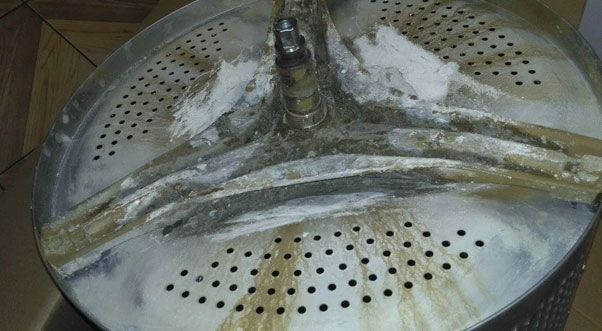
Some unscrupulous manufacturers of washing machines do not make drums for equipment from stainless steel with a high nickel and chromium content but from cheaper alloys. With constant contact with water, corrosion occurs - rust forms on the drum of the washing machine. If measures are not taken in time, the walls of the metal container will riddle with holes. The equipment will need serious and expensive repairs and, in severe cases, purchasing a new one. You can remove the plaque that has appeared at home.
The question of what to do with rust is relevant at the initial stages of its appearance because, in a situation where the metal falls off the drum in pieces, cleaning will no longer help. In this case, a complete replacement of the part with a new one associated with the tank's opening requires. Unfortunately, in some models, this is generally impossible to do: the tank is soldered entirely, and if it cuts to replace the drum, restoring the previous complete integrity will be difficult. In such a situation, changing the entire tank-drum assembly is recommended, and these are serious costs.
If rust has just appeared, you need to remove it as soon as possible. However, using abrasive devices - grinding wheels and sandpaper- is highly undesirable. They can cause more severe damage, leaving scuffs and roughness more susceptible to corrosion. A safer option is special household chemicals.
Special preparation of the washing machine before cleaning is not required but should note that such liquids are very aggressive, so they must be applied carefully, only to the places of damage and only to metal surfaces.
The advantages of acid transducers are eliminating damage to metals of any thickness and the ability to work with liquid at high and low temperatures. As a result, they are used to combat corrosion on car bodies and any metal elements of household appliances.
The main active component of such funds is acid - orthophosphoric or hydroxycarboxylic. She can destroy the corrosive coating and create an invisible film that prevents the reappearance of rust. To increase the effect of use, applying the inhibitor on a dry surface is recommended. After the necessary time, the agent should be washed off. Otherwise, prolonged exposure to acid will lead to additional damage to the metal.
The agent should be applied locally. For this, it is advisable to use a thin brush or a small roller, so the inhibitor does not get on areas not damaged by corrosion. Take care of personal protection as well. Required:
Processing is preferably carried out outdoors or in a room with good ventilation. Despite the inconvenience and danger of this method of rust control, it is the most effective because dark spots disappear in a matter of seconds. After that, it remains only to wash off the remnants of the inhibitor with a rag, abundantly moistened with clean water.
You can try safer corrosion control products based on less aggressive components if desired. They are also easy to use but less toxic since they contain zinc or tannin oxides instead of acid. They can be applied by any method, including spraying. Bonus - they stain the damaged area black, so it will be easy to tell which stains have been treated and which still need to be treated.
Copyright © 2020 Coimbatore Service.